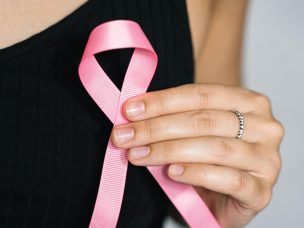There is an increasing use of neoadjuvant chemotherapy in breast cancer patients; however, there is a need for a better understanding of the effectiveness on the tumor. Pathology plays a major role in finding how host factors interact with tumor characteristics. Patients expressing pathological complete response (pCR) is strongly correlated to long term survival in certain subtypes of breast cancer. A research study presented at the 2020 San Antonio Breast Cancer Symposium examined the extent of racial disparities in pCR after neoadjuvant chemotherapy.
The study was conducted by establishing a cohort of patients with breast cancer treated at an academic medical center in the ethnically diverse City of Chicago. For the patients that were receiving neoadjuvant chemotherapy the researchers looked at whether racial disparity existed in the rate of pCR, defined as ypT0/isypN0. Multivariable logistic regression models were used to look at the ratios of black vs white patients. But adjusted by tumor stage and molecular subtype. The results revealed among the 595 stage I-III breast cancer patients, 32.5% of the White patients achieved pCR while only 23.9% of the Black patients achieved pCR. Even after adjusting for tumor type black patients still had lower odds of achieving pCR.
MD Newsline interviewed hematologist oncologist Dr. Shaina Rozell of Affiliated Oncologists in Chicago about these disparities and she indicated that from her experience, ”black women tend to delay treatment out of fear of doctors, cancer, and often times the healthcare infrastructure. These women may not be as aggressive in getting treatment and with HER2 and triple negative breast cancer this means the patient may have lost the opportunity to achieve a cure. Many of my patients do not come to me until they feel intense pain and because triple negative and HER2 breast cancer metastasize so quickly it leads to worse outcomes. It’s important for general practitioners to urge their patients to get mammograms and ultrasounds especially if they have breast caner in their family”.
Black patients had a lower pCR rate after neoadjuvant chemotherapy, and this racial disparity was found largely among HR-/HER2+ patients. A factor to consider is that delayed initiation of treatment may partially contribute to this racial disparity. In addition, most of the racial disparity in response to neoadjuvant therapy could be due to biological difference beyond subtypes. There is still a need to continue studying host and tumor characteristics in response to therapy in diverse populations.
Fangyuan Zhao, Meghan Steiner, Abiola Ibraheem, Gini Fleming, Nora Jaskowiak, Rita Nanda, Olufunmilayo I. Olopade and Dezheng Huo. University of Chicago, Chicago, IL









